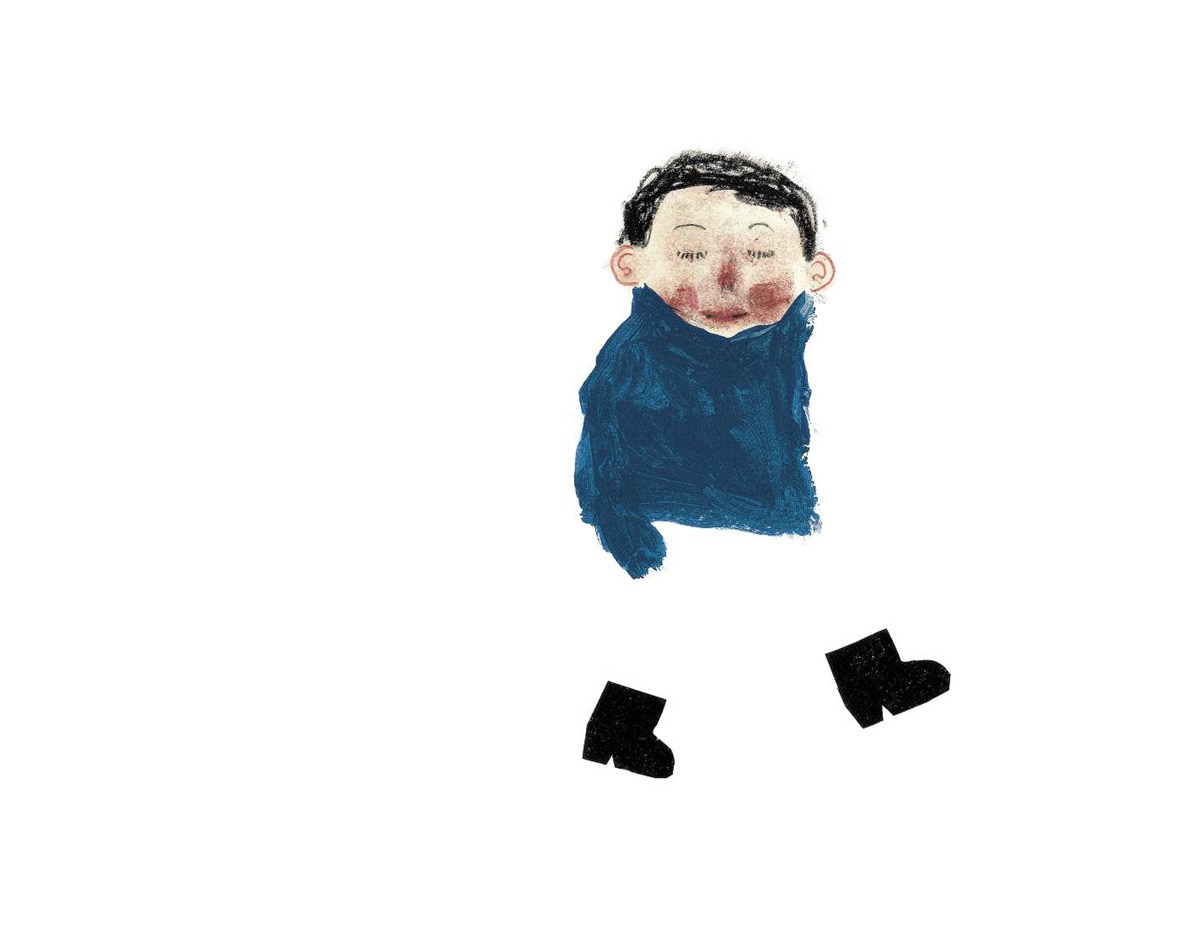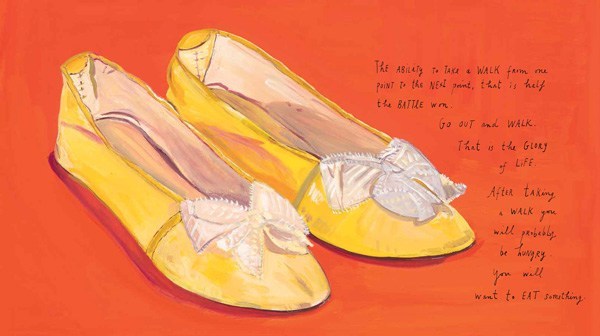“Slow is not better than fast. It’s just different. Everything changes, regardless of pace, and direct firsthand experience of temporality can happen while you are strolling just as much as while you are stepping deliberately and slowly.”
By Maria Popova
“I have met with but one or two persons in the course of my life who understood the art of Walking, that is, of taking walks — who had a genius, so to speak, for sauntering,” Henry David Thoreau wrote in his classic manifesto for the spirit of sauntering, before proclaiming that “every walk is a sort of crusade.” A century and a half later, Rebecca Solnit picked up the subject in her ambulatory classic: “I suspect that the mind, like the feet, works at about three miles an hour. If this is so, then modern life is moving faster than the speed of thought, or thoughtfulness.” Perched partway in time between Thoreau and Solnit, Thomas Bernhard twined these sentiments in his exquisite meditation on walking, thinking, and the paradox of self-reflection: “There is nothing more revealing than to see a thinking person walking, just as there is nothing more revealing than to see a walking person thinking.”
 Art from What Color Is the Wind? by Anne Herbauts
Art from What Color Is the Wind? by Anne Herbauts
But what if the peripatetic body could be an instrument not of moving the mind but of stilling the mind in order to apprehend reality, internal and external, more clearly? What if walking could be not a crusade but a consecration?
That, of course, is what Eastern traditions have been doing for millennia. How to do it — how to master the ancient art of walking meditation and incorporate it into a modern life, into your regular rhythm of being — is what the great Buddhist teacher and psychotherapist Sylvia Boorstein details in a portion of her funny, poignant, wholly revelatory 1996 field guide to mindfulness practice, Don’t Just Do Something, Sit There (public library).
 Sylvia Boorstein
Sylvia Boorstein
Boorstein — who arrived at Buddhism through the portal of political activism in the 1960s and went on to help pioneer the ancient Eastern tradition as a spiritual and psychotherapeutic practice in the West, and whose teachings have transformed my own life — outlines the basic mental and material framework of walking meditation:
Pick a place to walk back and forth that is private and uncomplicated — one where the walking path can be ten to twenty feet long. If you walk outdoors, find a secluded spot so that you won’t feel self-conscious. If you walk indoors, find a furniture-free section of your room or an empty hallway. Then you can devote all your attention to the feelings in your feet as you walk.
Keep in mind that this is attentiveness practice and tranquillity practice, not specialty walking practice. You don’t need to walk in any unusual way. No special balance is needed, no special gracefulness. This is just plain walking. Perhaps at a slower pace than normal, but otherwise, quite ordinary.
Begin your period of practice by standing still for a few moments at one end of your walking path. Close your eyes. Feel your whole body standing. Some people start by focusing their attention on the top of the head, then move their attention along the body through the head, shoulders, arms, torso, and legs, and end by feeling the sensations of the feet connecting with the earth. Allow your attention to rest on the sensations in the soles of the feet. This is likely to be the feeling of pressure on the feet and perhaps a sense of “soft” or “hard,” depending on where you are standing.
 Art by Shaun Tan for a special edition of the Brothers Grimm fairy tales.
Art by Shaun Tan for a special edition of the Brothers Grimm fairy tales.
From this mental launchpad commences the actual movement, the intention of which Boorstein takes care to protect from the momentum of our everyday biped habits:
Begin to walk forward. Keep your eyes open so that you stay balanced. I often begin with a normal strolling pace and expect that the limited scope of the walk, and its repetitious regularity, will naturally ease my body into a slower pace. Slowing down happens all by itself. I think it happens because the mind, with less stimuli to process, shifts into a lower gear. Probably the greed impulse, ever on the lookout for something novel to play with, surrenders when it realizes you’re serious about not going anywhere.
When you walk at a strolling pace, the view is panoramic and descriptive. When your walking slows, the view is more localized and subjective. If we could see running readouts, like subtitles, of the mental notes that accompany walking, they might look like this:
Strolling pace: “Step . . . step . . . step . . . step . . .
arms moving . . . head moving . . . smiling . . . looking . . .
stopping . . . turning . . . bird chirping . . .
stepping . . . stepping . . . wondering what time it is . . .
thinking this is boring . . . stepping . . . stepping . . .
swinging arms . . . feeling warm . . .
feeling cool . . . I’m glad I’m in the shade . . .
deciding to stay in the shade . . . smiling . . . stepping . . .”
Slower pace: “Pressure on feet . . . pressure . . . pressure disappearing . . .
pressure reappearing . . . pressure shifting . . .
lightness . . . heaviness . . . lightness . . . heaviness . . . lightness . . .
Hey! Now I’ve got it! Now I’m finally present!. . .
Whoops, I’ve been distracted . . . Start again . . .
Pressure on feet . . . pressure shifting . . . lightness . . .
heaviness . . . lightness . . . heaviness . . .
hearing . . . warm . . . cool . . .”
 “Go out and walk. It is the glory of life.” Art by Maira Kalman from My Favorite Things.
“Go out and walk. It is the glory of life.” Art by Maira Kalman from My Favorite Things.
Boorstein adds an essential disclaimer — a disclaimer and an assurance, necessary for us human animals so conditioned by modern life to overdo, so anxious to overachieve:
Slow is not better than fast. It’s just different. Everything changes, regardless of pace, and direct firsthand experience of temporality can happen while you are strolling just as much as while you are stepping deliberately and slowly. The speed-limit guide for mindful walking is to select the speed at which you are most likely to maintain attention. Shift up or down as necessary.
Aware, with Borges, that time is the substance we are made of, Boorstein ends with a similar antidote to our temporal anxiety:
Start with thirty minutes… Set the timer and begin… As you walk note how many times the impulse to check the time arises. Don’t do it. Just walk. This way, in addition to composure and attentiveness, you get to practice renunciation, a fundamental factor in awakening.
Complement with The Wind in the Willows author Kenneth Grahame’s century-old meditation on walking as creative fuel and Lauren Elkin’s marvelous modern-day manifesto for peripatetic empowerment, then revisit the great Zen teacher Thich Nhat Hanh on how to do hugging meditation and savor Sylvia Boorstein’s reading of Pablo Neruda’s splendid ode to silence.




